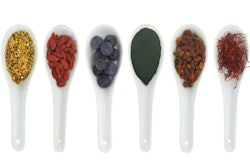
Total pet food sales in the US reached US$28.23 billion to US$31.35 billion in 2016, depending on whose data you follow. The lower figure comes from the American Pet Products Association’s (APPA) annual pet industry spending report; the higher is from Packaged Facts’ latest report, “US Pet Market Outlook, 2017-2018.” (The gap probably owes to differences in sourcing and compiling sales and revenue figures.)
Regardless, both figures represent healthy growth, which is expected to continue and is also playing out in total pet care. In the US, 2016 total pet care sales ranged from US$66.75 billion (APPA) to US$81.43 billion (Packaged Facts). Globally, they cracked the US$100 billion sales ceiling, thanks to a 4.7 percent increase over the year before. Euromonitor projects that growth to continue, with global pet care sales reaching US$117 billion by 2021, a compound annual growth rate of 2.4 percent at constant prices.
Drivers behind this growth include rising ecommerce (https://goo.gl/4f6Nd6) as well as the trends that have been spurring pet food sales for several years now. APPA’s report mentions “high-end,” premium pet food and treats. In its most recent report, Euromonitor lists several key trends:
- Humanization accelerating – the time it takes for an innovation in the human market to make the leap into pet food can be measured in months.
- Novel protein sources – even “fringe” proteins like insects and algae are likely to slowly but steadily percolate into the mainstream market.
- Online disruption – the growth of internet retailing makes it easier for pet food start-ups to reach consumers directly, accelerating the pace of innovation in health and wellness.
- Older, fatter pets – longer life expectancy and more overweight and obese pets drive demand for health and wellness pet food.
- Simplicity – shorter ingredient lists are becoming synonymous with quality in the minds of some consumers.

















